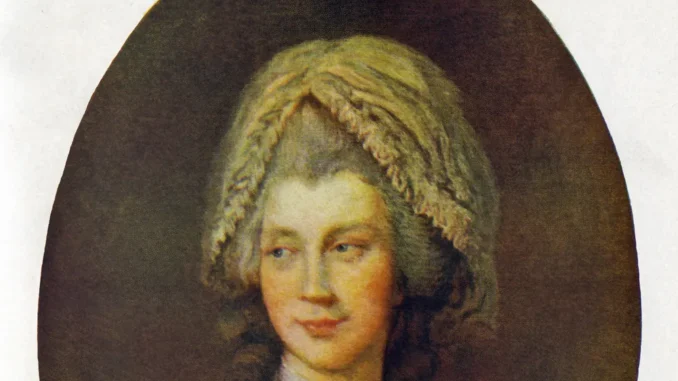
Before Meghan Markle, the late 18th-century Queen Sophia Charlotte of Mecklenburg-Strelitz may have been the country’s first biracial royal
The news of American actress and philanthropist Meghan Markle’s engagement to Britain’s Prince Harry is sure to paper the headlines for the foreseeable future. Exhaustive promises to address every possible take on the life and times of the bride-to-be—from why she’ll be given military training before she joins the royal family to the cocktails that have already been inspired by her engagement.
The historical significance of Markle’s entrance into the House of Windsor is clear, especially because as DeNeen L. Brown of the Washington Post pointed out earlier this week, it opens up the question: is Markle the first biracial woman to marry into the British royal family ?
As Brown explains, the answer is complicated. In an interview with African diaspora historian Mario De Valdes y Cocom, the scholar tells Brown that her research points not to Markle but rather the late 18th-century royal Queen Sophia Charlotte of Mecklenburg-Strelitz as being England’s first biracial queen.
So who exactly was Queen Charlotte? Here are five things to know about the British royal:
She might have been chosen to be George III’s bride.
The queen, who lived from 1744 to 1818, was the eighth child—also the youngest daughter—of Duke Charles Louis Frederick and Duchess Elizabeth Albertine. At age 17, she traveled from Germany to England to marry George III, and it’s likely that George III’s mother had chosen her to marry him, Brown of the Washington Post notes.
She had 15 children; 13 survived childhood.
After Queen Charlotte married George III in 1761, she gave birth to 15 children. Being almost constantly pregnant weighed on her. “I don’t think a prisoner could wish more ardently for his liberty than I wish to be rid of my burden and see the end of my campaign. I would be happy if I knew this was the last time,” she wrote in 1780 about her pregnancy with her 14th child, Prince Alfred, according to Janice Hadlow’s The Strangest Family: The Private Lives of George III, Queen Charlotte and the Hanoverians.

Prince Alfred only lived two years. He became ill after receiving an inoculation against the smallpox virus and died in 1782; soon after, Prince Octavius, who was 19 months Prince Alfred’s senior, also died of smallpox in 1783.
The queen took their deaths hard, as Patrick Sawer reported for the Telegraph earlier this year, when a note from Queen Charlotte to the nanny of the deceased Alfred was made available to the public as part of an ongoing royal archives online project.
In the note, addressed to one Lady Charlotte Finch, Queen Charlotte wrote, “Receive this urn as an acknowledgment for your very delightful attendance upon my dear little angel Alfred, and wear the enclosed hair, not only in remembrance of that dear object, but as well as a mark of esteem from your delightful Queen Charlotte.”
Queen Charlotte supported famous classical composers.
The queen also made an impact on the life of Wolfgang Amadeus Mozart. According to Olwen Hedley, Queen Charlotte’s biographer, “As a young mother, [Queen Charlotte] extended her liberality to the eight-year-old Wolfgang Amadeus Mozart when he and his family visited England in 1764.” Later, Mozart dedicated his Opus 3 in her honor. In an English translation of the dedication page, he opens it by writing:
“Filled with pride and joy at daring to offer you a tribute, I was finishing up these sonatas to be laid at the feet of your Majesty; I was, I confess, drunk with vanity and thrilled with myself, when I spied the Genius of Music at my side.”
Evidence suggests she may have descended from black relatives within the Portuguese royal family, but it’s not conclusive.
As De Valdes y Cocom tells Brown of the Washington Post, evidence suggests that Queen Charlotte’s heritage stems from black relatives of the Portuguese royal family. Although Queen Charlotte was German, De Valdes y Cocom’s research shows the queen was directly descended from a branch of the Portuguese royal family, related to Margarita de Castro e Souza, a 15th-century Portuguese noblewoman nine generations removed.
Images of Queen Charlotte, however, likely downplayed her African features.
De Valdes y Cocom’s piece in PBS Frontline explains that the artists who painted Queen Charlotte weren’t aiming for an exact likeness. As she notes: “The [black African]… characteristics of the Queen’s portraits certainly had political significance since artists of that period were expected to play down, soften, or even obliterate undesirable features in a subject’s face.”
